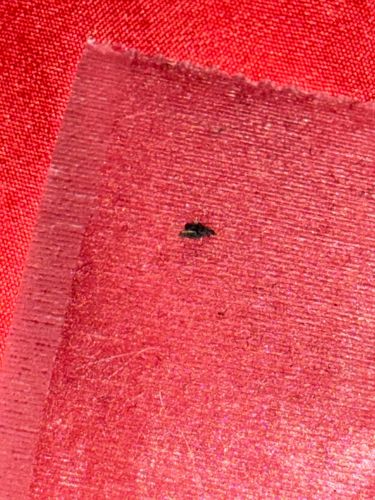Fungus Gnat
Scientific Name: Sciaridae species (e.g., Bradysia impatiens)
Order & Family: Order: Diptera, Family: Sciaridae (darkwinged fungus gnats) or Mycetophilidae (true fungus gnats). Given the appearance, it is most likely Sciaridae.
Size: Typically 2-5 mm (0.08-0.2 inches) in length.

Natural Habitat
Fungus gnats are commonly found in moist environments, particularly indoors around potted plants, greenhouses, and hydroponic systems. Outdoors, they inhabit areas with decaying organic matter, leaf litter, and compost piles. They thrive in high humidity.
Diet & Feeding
Larvae primarily feed on fungi, decaying organic matter, and plant roots, especially fine root hairs, in moist soil. Adult fungus gnats do not typically feed, but some may consume liquids like water or nectar.
Behavior Patterns
Fungus gnats are typically active flyers, especially around sources of moisture and organic matter. They lay eggs in moist soil or decaying plant material. Larvae feed on fungi and decaying organic matter below the surface. Adults are primarily nuisance pests and have short lifespans, usually around 7-10 days. They are often seen flying in small swarms, particularly during dusk or dawn, and are attracted to lights.
Risks & Benefits
Risks: Larvae can damage the roots of seedlings and young plants, especially in greenhouses or nurseries, leading to stunted growth or wilting. They are a common nuisance pest indoors due to their presence and flight. They do not bite humans or animals and are not known to transmit diseases. Benefits: As decomposers, larvae contribute to nutrient cycling in natural ecosystems by breaking down decaying organic matter. They can also serve as food for other insects and small predators.
Identified on: 8/30/2025